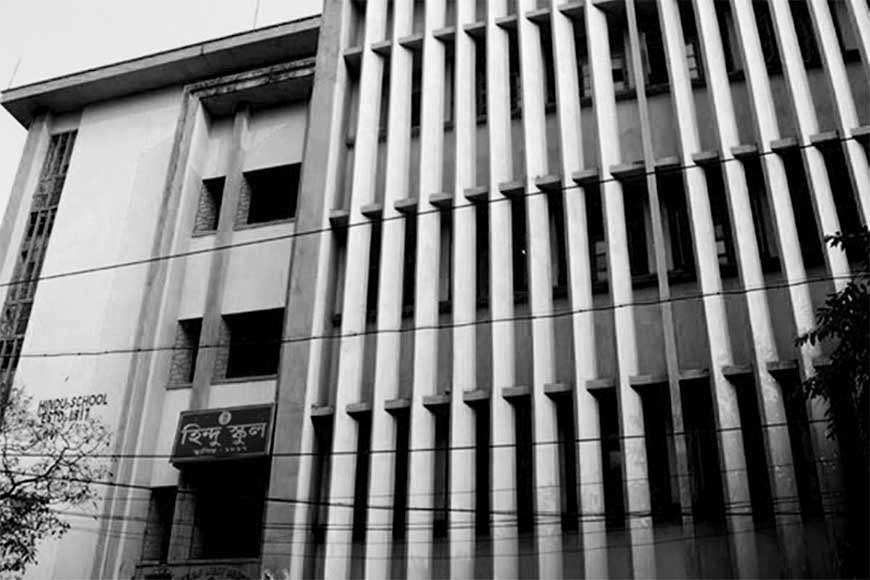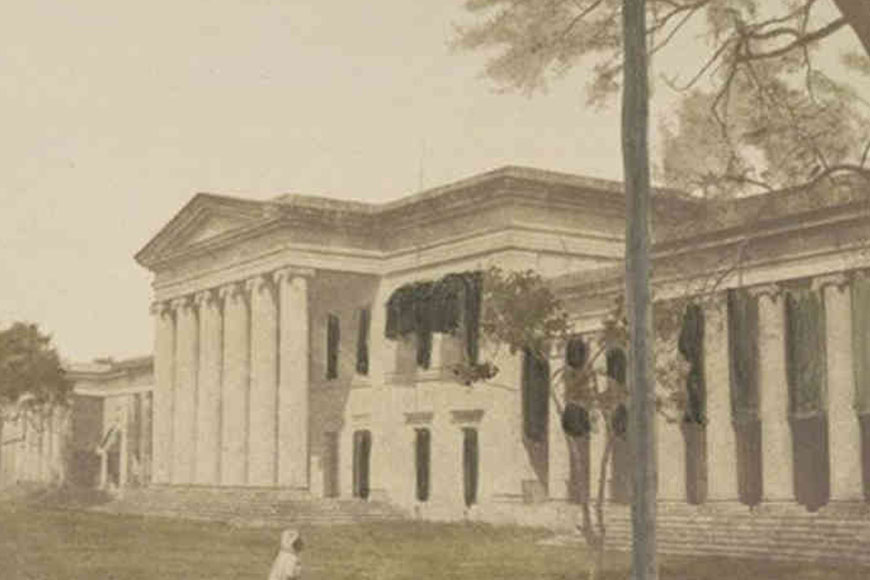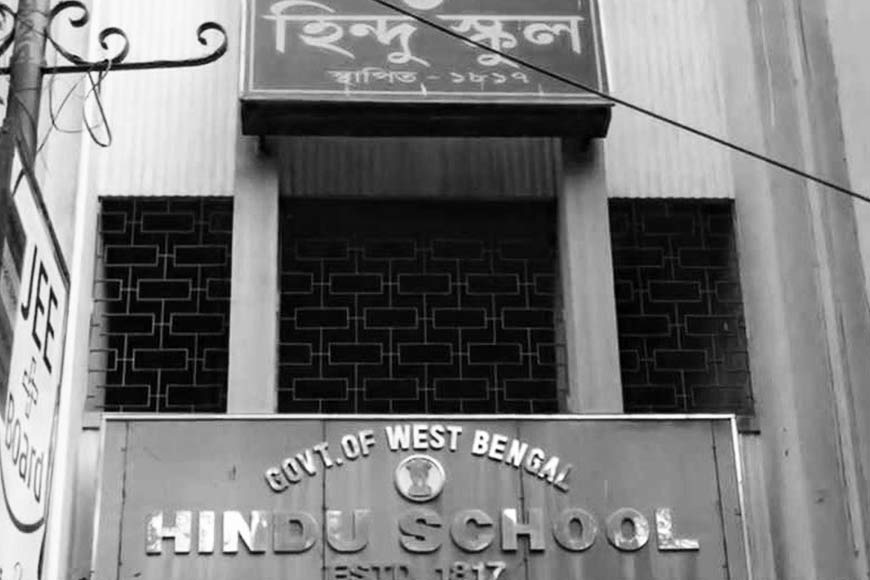Kolkata’s Hindu School is a shrine of modern education since 19th century!

“Education is the key to unlocking the world, a passport to freedom” – Oprah Winfrey
Prior to the advent of the British in India, the indigenous primary schools of Bengal taught very little beyond vernacular (Bangla), simple Arithmetic and Sanskrit. The tols (local small schools run by individuals) imparted lessons in advanced Sanskrit, grammar and literature, theology, logic and metaphysics. This was not enough to satisfy the aspiration of enlightened Indians like Raja Rammohun Roy, who felt that the process would only “load the minds of youths with grammatical niceties and metaphysical distinctions” without having any practical use. The necessity of learning English was also keenly felt by people who had to carry on a constant interaction with the British businessmen.
During the early 19th-century there was a distinct intellectual awakening in Bengal Society. Indians under British rule were first exposed to European culture and impacted by modern education and thought process. Reforms in various spheres of life including literature, religion, and other socio-political phenomena were a few corroborative evidences of this changing mind-set.
It all started in 1815 when Raja Rammohun Roy entertained a few friends at his house and suggested the establishment of Atmiya Sabha for improving the moral conditions of the countrymen. The Raja was very enthusiastic about bringing in some social changes to lift the society from the swamp of idolatry and superstitions to a higher moral plane. David Hare – one of the most prominent educationalists in then-Bengal, who was present at the venue, differed from Roy’s views and suggested establishment of a college.
 Hindu School
Hindu School
One of the most prominent outcomes of this Renaissance was the change in the curriculum taught in schools and establishment of new schools imparting modern and practical education. The idea of establishing an English school was already prevalent. The plan of imparting English education by David Hare received general approbation. The proposal was enthusiastically accepted by Rammohun. That was how the idea of Hindu School and College sprouted and Diwan Baidya Nath Mukherjee was deputed to collect the subscriptions.
A General Meeting was held on May 21, 1816, in a house on Old Post Office Street to finalize details about setting up an institution for promoting education. The institution shall include a Pathshala, or a School, and an Academy, Maha Patshala, the former to be established immediately, the latter as soon as may be practicable. The primary object of this Institution would be the tuition of the sons of respectable Hindus in English and Indian language, and in the literature and science of Europe and Asia. The English language shall not be taught to boys less than eight years of age. The school shall teach English and Bengali, Reading, Writing, Grammar and Arithmetic by the improved method of instruction.
Sir Edward Hyde East, Chief Justice of the Calcutta Supreme Court was invited to chair the committee and Joseph Baretto became the Treasurer. The committee succeeded in raising Rs 1,13,179.00, the principal donors being the Maharajah of Burdwan (Tejchand Bahadur) and Gopee Mohun Thakur, each contributing Rs 10,000.
On a wintry morning of January 20, 1817, a batch of 20 male students hailing from affluent Bengali Hindu families of Kolkata, met at the rented house of Gorachand Basak at Garanhata (304 Chitpur Road) marking the first meeting day of Hindu School. In 1825, with the help of the British Government, a school building was built for Rs 1 lakh 24 thousand, towards the north of Goldighi (now known as College Square) on a land donated by David Hare. The Hindu College was originally divided into two sections – a school (Pathshala) which imparted instruction in English, Bangla, Grammar and Arithmetic and a college (Mahapathshala) teaching languages, History, Geography, Chronology, Astronomy, Mathematics, Chemistry and other sciences. On the opening day there were 20 pupils on the rolls but within the next three months, the number swelled to 69.
On June 15, 1854, the upper section of the school (the Hindu Mahapathshala or the Hindu College) was made an open center for modern education including eastern and western philosophy and science and was separated as Presidency College and the junior section remained as Hindu School. The junior section, Pathsala, began operations independently. Here, members of Young Bengal, a group of Bengali free thinkers also known as Derozians, emerged from Hindu College, Calcutta. They included Dakhinaranjan Mookherjee, Ram Gopal Ghose, Tarachand Chakravarty and Krishnamohan Banerjee who were baptized by their teacher Henry Louis Vivian Derozio and were instrumental in spreading the teachings of modern science and social philosophy among students. A vast social movement was unleashed in Bengal and its repercussions were felt all over India. The school imparted modern education to young students in European and Oriental subjects.

Situated in the heart of Kolkata, opposite Presidency College, surrounded by College Square, Sanskrit College, Coffee House, Calcutta University and Medical College, Hindu School is an all-boys school. It is one of the oldest and leading institutions in India and is a National Heritage of institutional education and educational reform.
Hindu School has been providing education primarily in Bengali medium until 2017, prior to its bicentenary, when it was decided to introduce English as the second medium of imparting education. The school’s illustrious alumni includes the who’s who of successful people from all spheres of life -- education, authors, social reformers, political activists, doctors and engineers. Social reformers including Rajendralal Mitra, the first Indian administrator of Asiatic Society, Surendranath Banerjee, educationalist, social reformer and political activist during Indian freedom movement, Keshob Chandra Sen and Anandamohan Bose reformist and leaders of the Bramha Samaj Movement; educationists include Manindra Chandra Nandy, founder of Maharaja Manindra Chandra College, Prasanta Chandra Mahalanobis , scientist and founder of Indian Statistical Institute, Anandamohan Bose, founder of City College, Kolkata, Kaliprasanna Singha, founder of Vidyotsahini Sabha, eminent educationist and Union Minister, Dr.Pratap Chandra Chunder. Eminent professors including Taraknath Palit, founder member or Calcutta University Science College, Satyendranath Bose, an eminent professor, known world-wide for the famous Bose–Einstein statistics theory, Professor and famous scientist Dr Meghnad Saha . Dr Nil Ratan Sircar, Dr Radha Gobinda Kar, Chhabi Biswas, Birendranath Sarkar, Nitin Bose, Pulak Bandopadhyay and many more. The list would go on and on.










